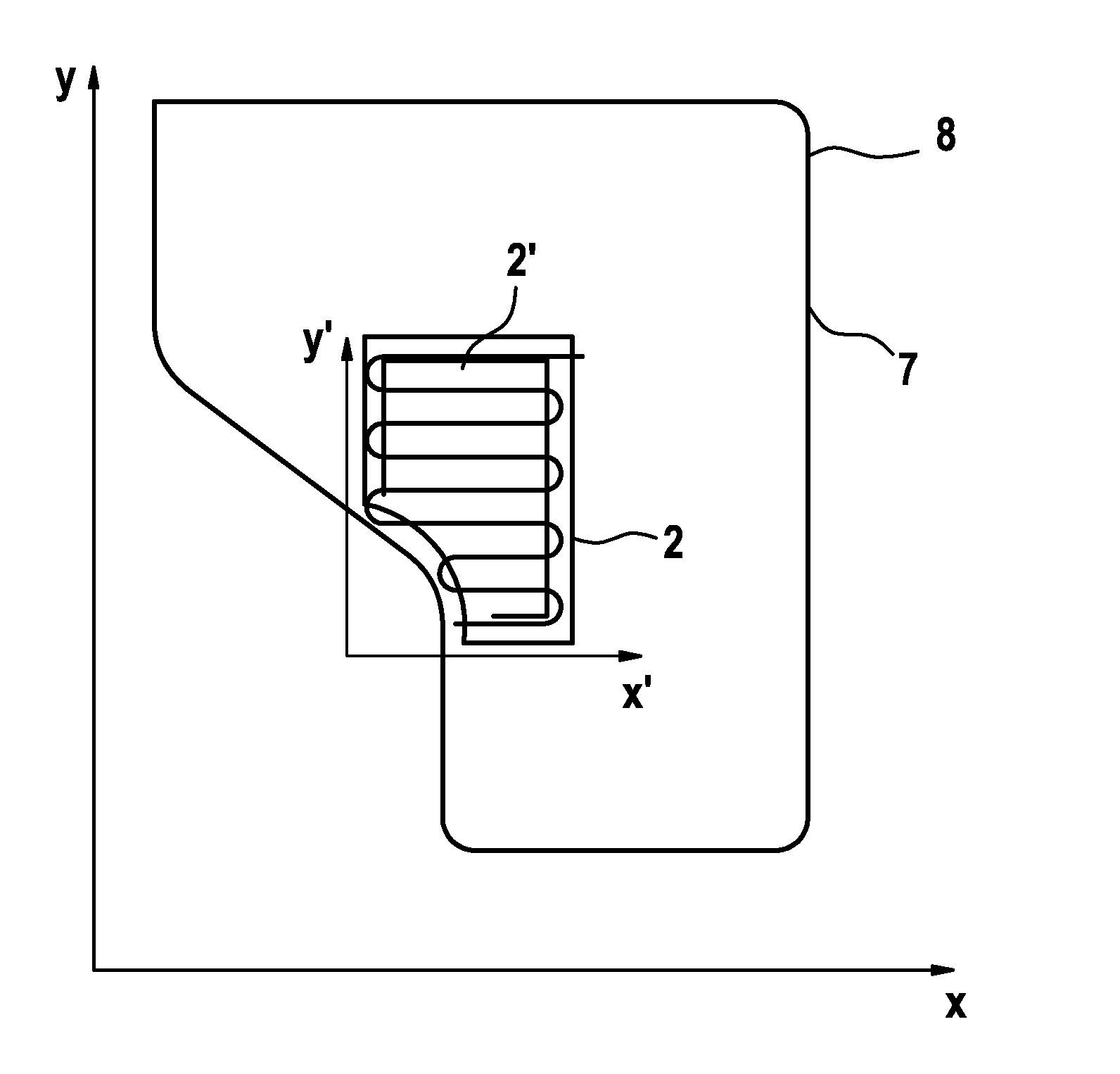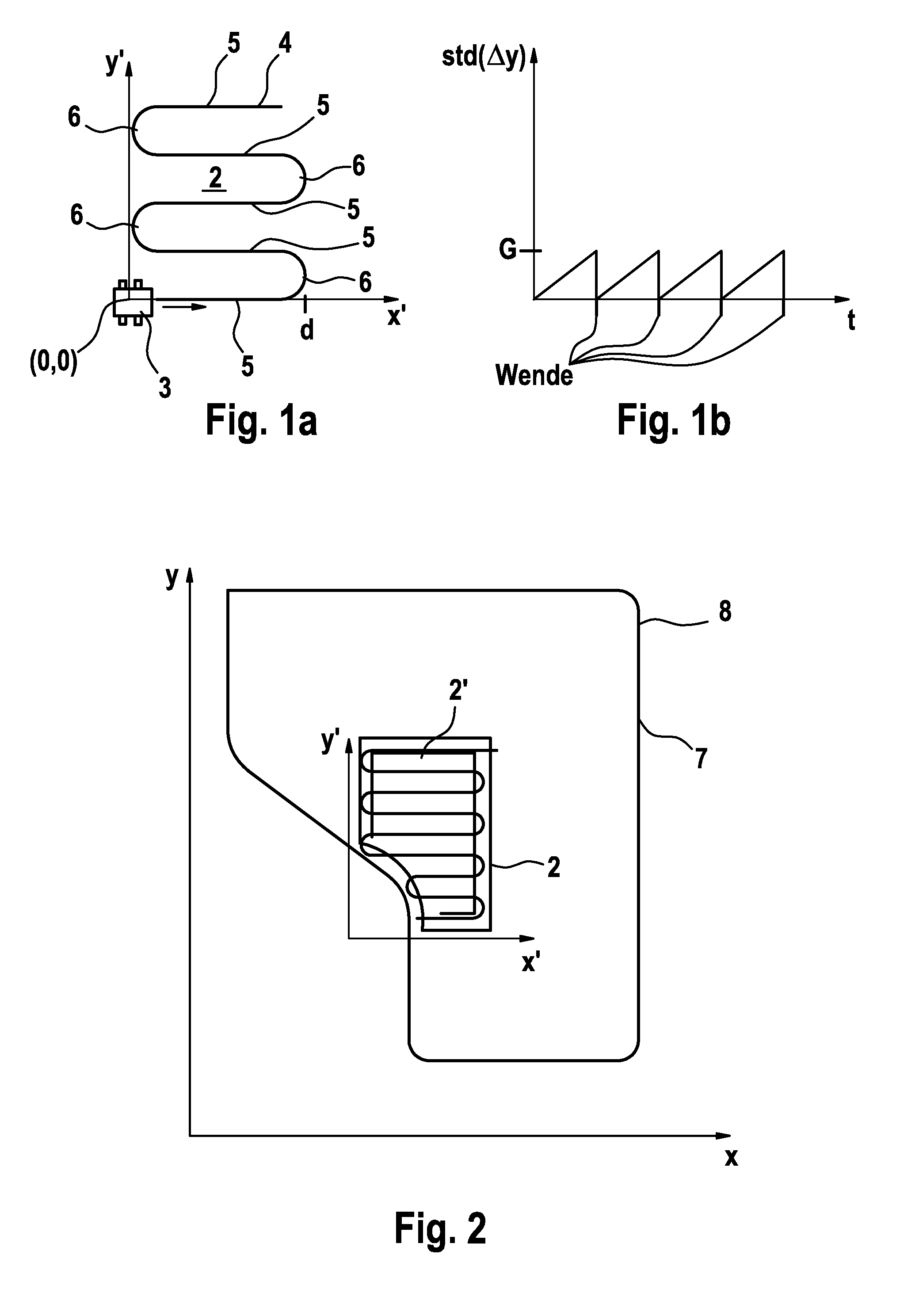Control method for a robot vehicle, and robot vehicle
a robot vehicle and control method technology, applied in the direction of process and machine control, distance measurement, instruments, etc., can solve the problems of inability to guarantee the complete coverage of the working area, affecting the accuracy of standard gps receivers, and presenting technical barriers, so as to improve the manicured appearance of the lawn, improve the accuracy of section navigation, and improve the individual position estimation
- Summary
- Abstract
- Description
- Claims
- Application Information
AI Technical Summary
Benefits of technology
Problems solved by technology
Method used
Image
Examples
Embodiment Construction
[0027]Elements which are the same and elements having the same function are labeled in the figures with the same reference numerals.
[0028]In FIG. 1a, a section 2 is schematically depicted in a sectional Cartesian coordinate system 1 (x′, y′). A robot vehicle 3 travels through said section 2 according to a section travel strategy with a sinuous movement pattern 4. The movement pattern 4 comprises a plurality of course sections 5 which are substantially parallel to each other, wherein two adjoining course sections 5 are in each case connected to each other via in each case a 180E turnaround 6 (turnaround course section). The direction of travel of the robot vehicle 3 along the course sections 5 takes place along the x′ axis. A position estimation error in the y′ direction, i.e. transversely to the direction of travel, is continually ascertained by dead reckoning—likewise the associated standard deviation std (Δy).
[0029]The distance d is plotted on the x′ axis, whereat the robot vehicl...
PUM
 Login to View More
Login to View More Abstract
Description
Claims
Application Information
 Login to View More
Login to View More - R&D
- Intellectual Property
- Life Sciences
- Materials
- Tech Scout
- Unparalleled Data Quality
- Higher Quality Content
- 60% Fewer Hallucinations
Browse by: Latest US Patents, China's latest patents, Technical Efficacy Thesaurus, Application Domain, Technology Topic, Popular Technical Reports.
© 2025 PatSnap. All rights reserved.Legal|Privacy policy|Modern Slavery Act Transparency Statement|Sitemap|About US| Contact US: help@patsnap.com


